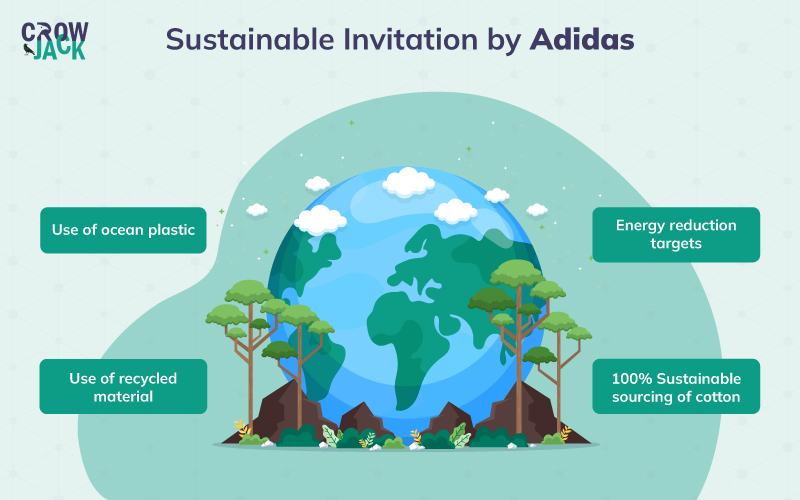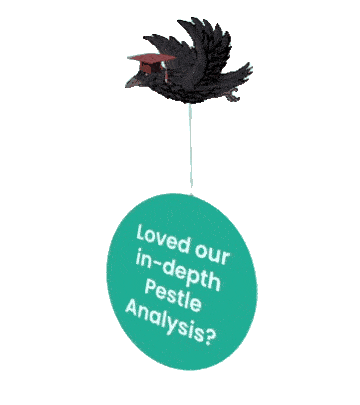Adidas Overview
Adidas is a German retailer of sportswear products and deals in various products like footwear, apparel, and sports equipment. The company is highly placed in the industry with a presence in more than 160 countries and a strong manufacturing network consisting of about 400 factories. The company earned a revenue of 4.74 million euros and was able to triple its income from 673,635 euros to 1,849,769 euros. The company employs more than 59,000 personnel in its stores worldwide.
Probing further, PESTLE analysis is required by the companies to analyze the ongoing political, economic, social, technological, legal as well as environmental aspects in the countries they are operating or wish to expand into so that they can formulate effective business strategies. This PESTLE analysis of Adidas would highlight the external environment in Germany and Japan for the sportswear and apparel industry.
Table of Contents
A strategic and systematic PESTLE analysis of Adidas
Political factors affecting Adidas
Germany has been a stable nation for a long time and has been under the reign of one chancellor for a long time with a change in the regime just recently. Further, Germany is one of the biggest markets for retailers and the federal government has recently made it mandatory for the companies to provide receipts to the buyer for the items purchased. If the company fails to do so, then a fine of 25000 Euros can be imposed (Carter, 2019). The companies should implement a strict billing system in order to avoid penalties as the penalties can put an unnecessary financial burden.
Further, the government has made it mandatory for companies with a workforce of more than 3000 workers to publish reports annually regarding the steps that are being taken to reduce the human rights abuses and environmental risks in the supply chain (HRW, 2021). This would force the companies to mandatorily improve the infrastructure and working conditions for the employees for which they might need to provide additional services as compared to now and as a result, they would experience a temporary increase in the operational cost.
The sportswear companies that have their origin in Germany can benefit from the fact that Germany is a part of the EU which is a common market and currently the same rules and framework apply for operating in 27 nations that are part of the EU. This can be positive news for the companies as their businesses would be more streamlined and they would be able to expand their operations easily.
Moreover, the sportswear companies can gain from the fact that the EU has signed an FTA with Japan, Australia, and many other nations that are high consumers of the sportswear products and this would benefit the companies as almost 90% of the goods would be tariff-free for the exports.
Further, the companies can have a sigh of relief while operating in the emerging market of Japan where the government is planning to bring a law against selling counterfeit and defective products. This would benefit the companies in terms of protecting their brand image and increasing revenues.
Moreover, most of the sportswear companies outsource their operations to China and Japan does not have positive relations and is discouraging the companies to invest out of China which can be challenging for the companies as they would have to totally shift their infrastructure and as a result would have to incur expenditure and procure other resources like land, labor from the scratch. In addition, the Japanese government’s decision to increase the sales tax on retail items from 8% to 10% would put an extra burden on the customers and the prices of the products would rise which would ultimately lower the sales of the sportswear companies.
Economic factors affecting Adidas
The German economy grew by 2.8% in 2021 and it is expected to be at 3.6% in 2022 and lower to 2.6% in 2023 (IMF, 2021). Further, the unemployment rate by the end of 2021 was 5.1% (KPMG, 2022). The forecasted unemployment rate for 2023 and 2024 is 4.9% and 4.7% respectively. Even, inflation is also normal at 3.1%. The moderate inflation rate can be a positive sign for the companies as the companies would be able to get appropriate value for their products.
Further, the growth rate in Japan is expected to be 1.8% by the end of FY2021 and increase to 3.4% in 2022 and then further decrease to 1.1% in 2023 (OECD, 2021). The inflation in Japan is predominantly low at 0.9% in Feb 2022 and such a less inflation rate means less printing of money which ultimately reflects less purchasing power among the customers. This would lower the sales of the companies.
The German sportswear industry was worth 4.7 billion euros in 2021 and is expected to rise gradually by a CAGR of 1.11% from 2022 to 2026.
Social factors affecting Adidas
The Germans prefer a healthy lifestyle which is evident from the fact that 42% of people consider fitness as their top priority. The trend of fitness would result in more demand for athletic products (Losch & Poine, 2021). Moreover, the fashion brands in Germany would have to highly shift their operations to sustainable means because of rising demand from customers. About 60% of people prefer purchasing products that have been packaged in an environment-friendly manner while 67% of customers look for sustainability in the materials while purchasing fashionable products.
With respect to the thriving culture of sustainability, the sustainable practices adopted by Adidas are illustrated below

Further, the active sports population in Japan is high at 22%, signifying the positive scope for the sale of fitness products and apparel. Additionally, the Japanese e-commerce market is the third largest world in the world with sales of $128 billion and apparel is among the top four products sold online. The sportswear retailers can exploit this opportunity and aggressively venture into the Japanese market with investment in the e-commerce segment (International Trade Administration, 2020).
Technological factors affecting Adidas
The German government spent 104 billion euros on R&D in 2021 while the contribution for the research and development by the combined Japanese government and private players amounted to 3.06 trillion yen in 2021. The emerging technologies in the retail stores include augmented reality which includes a virtual fitting room for the customers wherein the shoppers can see how they look while trying different items. Further, the retailers are implementing indoor navigation technology in the stores wherein the customers can find the desired items just by following directions on the phone’s screen. Furthermore, artificial intelligence is also being used to manage inventories.
The use of AI technology reveals the consumer spending pattern which assists the companies in knowing the products that are more in demand and are likely to move more around the sales floor. In addition, the retailers are deploying robots for the purpose of assisting customers and delivering the products. This eliminates the need for a human workforce and also results in more efficiency (Shotwell, 2021).
Besides, smart shoes are also emerging on the scene that come with smart chips and can be connected to wearable devices to track fitness. Such innovations will constantly drive new changes in the industry and set new prerequisites for technological innovations.
Legal factors affecting Adidas
The German government has recently amended the antitrust laws wherein the executing agency named Federal Cartel Office has now been empowered to hold the companies accountable and penalize them for restricting other companies to enter the market by creating barriers for them. Further, the companies can also be held liable if they withhold any market-related information that can provide them an undue advantage over the competitors. The law for mergers has also been amended and the FCO has the power to block a merger that is valued at 20 million euros or more if the agency thinks that the merger is going to restrict the competition in the market.
Further, Japan is also an emerging market for the sportswear industry and the federal government has amended the Antimonopoly and Subcontract Act. Consequently, the companies cannot increase the prices of final products as a result of the rise in prices of raw materials without prior discussion with the government authorities.
Also, the factory owners should compulsorily enter into a contract with the manufacturers if the order requires producing a large number of goods. This is done to ensure the reduction in the wastage of products (Neo, 2022). Moreover, the stores are now required to display the prices of the products by including sales tax. This would provide more clarity regarding the pricing structure to the customers (Chris, 2021).
Environmental factors affecting Adidas
The sportswear industry uses lots of plastic in manufacturing shoe soles. Further, plastic is also used in the packaging of the products. To reduce the impact of plastic, the German government has formulated the Packaging Act to create a circular economy for plastic wherein the companies are required to collect the packaging material from the customers after selling the items and the source and recycle it and the money required for the process should be charged from the customers. Imposing extra fees can discourage the customers from buying the products.
In Addition, the Japanese government is also aiming to reduce the use of plastic and the government has made it mandatory for the stores to charge customers for plastic shopping bags to discourage the customers from using plastic. Moreover, the retailers in Japan have to shift to sustainable business practices as the government is planning to implement a carbon tax on the companies for the generation of emissions (Japan Times, 2021).
To encapsulate, the political environment in both Germany and Japan favors businesses but they need to abide by several norms in Germany giving of receipt at the time of purchase has been made mandatory and the Japanese government is trying to tackle fake products and would soon introduce a strict law with this regard which can be beneficial for the retail companies whose fake products are common in the market. Further, the economic indicators related to Japan are not much in favor of the businesses as the inflation is below normal and this can restrict the customers from spending too much as there wouldn’t be any printing of currency. But the good news is that the trend of wellness exercises is rising and also companies should now shift their attention to e-commerce as the customers are relying more on online shopping after COVID. The main problem in the sportswear industry is the use of plastic for which both the German and Japanese governments are getting strict and now in Germany, it is compulsory for the companies to collect plastic packaging from the customers and recycle it. So, the companies should be aware of the benefits and negatives while conducting operations. Moreover, if you wish to analyze the internal capabilities of the company, you can delve into an astute SWOT analysis of Adidas conducted by us with extensive research.
Recommended Readings
References
HRW. (2021). Germany: New Supply Chain Law a Step in the Right Direction. /www.hrw.org. Retrieved 30 March 2022, from https://www.hrw.org/news/2021/06/11/germany-new-supply-chain-law-step-right-direction
Lösch,, M., & Pione,, A. (2021). The future of the $1.5 trillion wellness market. /www.mckinsey.co. Retrieved 30 March 2022, from https://www.mckinsey.com/industries/consumer-packaged-goods/our-insights/feeling-good-the-future-of-the-1-5-trillion-wellness-market.
Neo, P. (2022). www.foodnavigator-asia.com. www.foodnavigator-asia.com. Retrieved 30 March 2022, from https://www.foodnavigator-asia.com/Article/2022/01/26/japan-fair-transaction-guidelines-hoped-to-prevent-monopolies-and-improve-trade
OECD. (2021). Economic Survey of Japan (December 2021). /www.oecd.org. Retrieved 30 March 2022, from https://www.oecd.org/economy/japan-economic-snapshot/.
Shotwell, L. (2021). 7 Retail Technology Trends Reviving the Stores in 2022. mobidev.biz/. Retrieved 30 March 2022, from https://mobidev.biz/blog/7-technology-trends-to-change-retail-industry

 Proof Reading
Proof Reading  Copy Writing
Copy Writing  Resume Writing
Resume Writing  Blogs
Blogs Guides
Guides SOP's
SOP's Student Resources
Student Resources Research Topics
Research Topics Login
Login Register
Register



